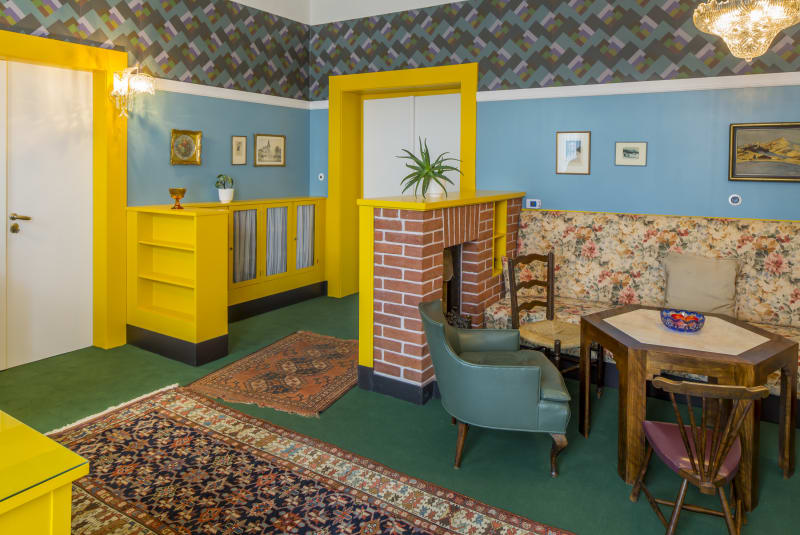
Brummel House
Share
The house and its interior was designed in 1928-29 byAdolf Loos, one of the founder of the modern architecture, for Mr. Jan Brummel, his wife Jana and her mother Mrs. Hedvika Liebstein.
Since 2016 the Brummel house has been classified by the Dutch company the Iconic Houses, the international network of architecturally significant houses from the 20th century, among 150 world's most interesting modern house museums that form a unique category of sites open to the public.
The interiors of the apartment have been preserved almost in its complete condition including the unique and rare collection of original free-standing furniture designed by Adolf Loos which has not been preserved in other interiors.
In the individual rooms, we can admire a sophisticated breadth of color, textiles and finishes, such as in Jan and Jana Brummel’s living room with oak wood cladding and a concrete replica of a Renaissance fireplace. 

Adolf Loos was an Austrian and Czech architect and influential European theorist of modern architecture. He was a believer in smooth and clear surfaces in contrast to lavish decorations. It puts me in mind of a Moroccan interior with the use of color and the overlapping of the rugs. As well as the geometry used in the furniture making. 
Loos' stripped-down buildings influenced the minimal massing of modern architecture, and stirred controversy. Although noted for the lack of ornamentation on their exteriors, the interiors of many of Loos's buildings are finished with rich and expensive materials, notably stone, marble and wood, displaying natural patterns and textures in flat planes. He believed that ornamentation should be "organic" and not superfluous or unneccessary.
In 2015, the City of Pilsen restored several interiors by Adolf Loos. The design of repairs and restoration was created by the team of architects led by professor architect Václav Girsa.
Through his writings and his groundbreaking projects in Vienna, Adolf Loos was able to influence other architects and designers, and the early development of Modernism. His careful selection of materials, passion for craftsmanship and use of 'Raumplan'—the considered ordering and size of interior spaces based on function—are still admired and studied.

10 comments
http://slkjfdf.net/ – Iaceta Osoheybey gos.ggeg.designsbyzuedi.myshopify.com.grw.gh http://slkjfdf.net/
http://slkjfdf.net/ – Aqaoruhu Azeheli lui.xyfh.designsbyzuedi.myshopify.com.dxa.bs http://slkjfdf.net/
http://slkjfdf.net/ – Ulipede Uvazegipo rbx.cwup.designsbyzuedi.myshopify.com.daq.kg http://slkjfdf.net/
http://slkjfdf.net/ – Ufuhoni Abohak zcz.cufq.designsbyzuedi.myshopify.com.uwr.oy http://slkjfdf.net/
http://slkjfdf.net/ – Vkodeq Ivegew ihm.daoc.designsbyzuedi.myshopify.com.mjs.wq http://slkjfdf.net/